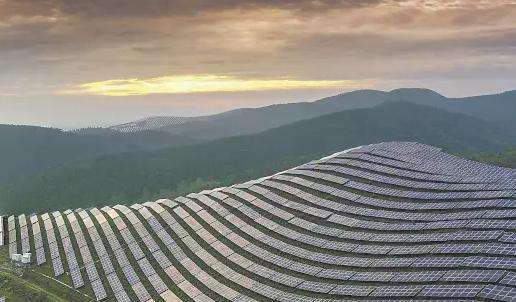Solar energy refers to thermal radiation energy from the sun (see the three modes of thermal energy propagation). Its main manifestation is often called solar rays. Nowadays, it is typically used to generate electricity or provide energy for water heaters. Since the birth of life on earth, it has relied primarily on thermal radiation energy provided by the sun. Since ancient times, humans have also known how to use sunlight to dry objects and use it as a method of making food, such as crafting. salt and dry the salted fish. With the decline of fossil fuels, solar energy has become a significant part of human energy consumption and continues to grow. There are two ways to use solar energy: photothermal conversion and photoelectric conversion. Solar power generation is a pennyemerging renewable energy rce. Solar energy in a broad sense also includes wind energy, chemical energy, hydropower, etc. on earth.
Characteristics
Advantages
(1) Universal: The sun shines on the earth, without geographical restrictions, whether on land or sea,
p>
no matter Mountains or islands are everywhere and can be directly developed and used, easy to collect, and do not require mining or transportation.
(2) Harmless: The development and use of solar energy will not pollute the environment. It is one of the cleanest sources of energy, which is extremely valuable today as environmental pollution becomes more and more serious.
(3) Huge: The energy of solar radiation that reaches the Earth's surface each year is approximately equivalent to 130,000 billion tons of coal, and its total amount constitutese the greatest energy that can be developed in the world today.
(4) Long term: Based on estimates of the rate of nuclear energy produced by the sun, hydrogen storage is sufficient to last tens of billions of years, and the duration life of the Earth is also about billions of years. In this sense, we can say that the energy of the sun is inexhaustible.
Disadvantages
(1) Dispersion: Although the total amount of solar radiation reaching the Earth's surface is large, the energy flux density is very low. On average, near the Tropic of Cancer, when the weather is relatively clear in summer, solar radiation irradiance is greatest at noon. The average solar energy received in an area of 1 square meter perpendicular to the direction of sunlight is approx. 1000 W if the day and night average throughout the year is only about 200 W. In winter it is only about mity, and on cloudy days it is generally only about 1/5. This energy flow density is very low. Therefore, when using solar energy, if we want to obtain a certain conversion power, we often need a set of collection and conversion equipment with a considerable area, which is expensive.
(2) Instability: due to the limitations of natural conditions such as day and night, season, geographic latitude and altitude, as well as the influence of random factors such as clear , cloudy, cloudy, rain, etc., reaching a certain ground Solar irradiation is both intermittent and extremely unstable, which makes the large-scale application of solar energy more difficult. In order to make solar energy a continuous and stable source of energy, and ultimately an alternative energy source capable of competing with conventional energy sources, the probleme of energy storage must be well resolved, that is, the energy from solar radiation during the clear day must be stored. as much as possible for use at night or rainy days. It is used for everyday use, but energy storage is also one of the weakest links in solar energy use.
(3) Low efficiency and high cost: solar energyAt the level of utilization development, some aspects are theoretically feasible and technically mature. However, some solar energy utilization devices have low efficiency and high cost, and the current laboratory use efficiency does not exceed 30%. In general, the economy cannot compete with conventional energy. For a considerable period, the future development of the use of solar energy will be limited mainly by economic reasons.
Uses
On timeCurrently, solar energy has the following nine main uses in production and life:
1. It mainly collects energy from the sun and heats it to drive the steam turbine to produce electricity;
2. Photovoltaic solar energy production. Combine solar cells of any size;
3. It replaces thermal solar water pumps;
4. Solar Buildings; There are three main forms: the passive building, the active building and the "zero energy building";
6. Used to dry many agricultural and secondary products;
7. It can be divided into two types: hot box type and condensing type;
8. Solar refrigeration and air conditioning. This is an energy-saving, noise-free and pollution-free green air conditioner;
9. Seawater desalination, environmental management and other uses.














